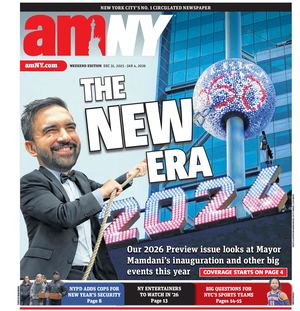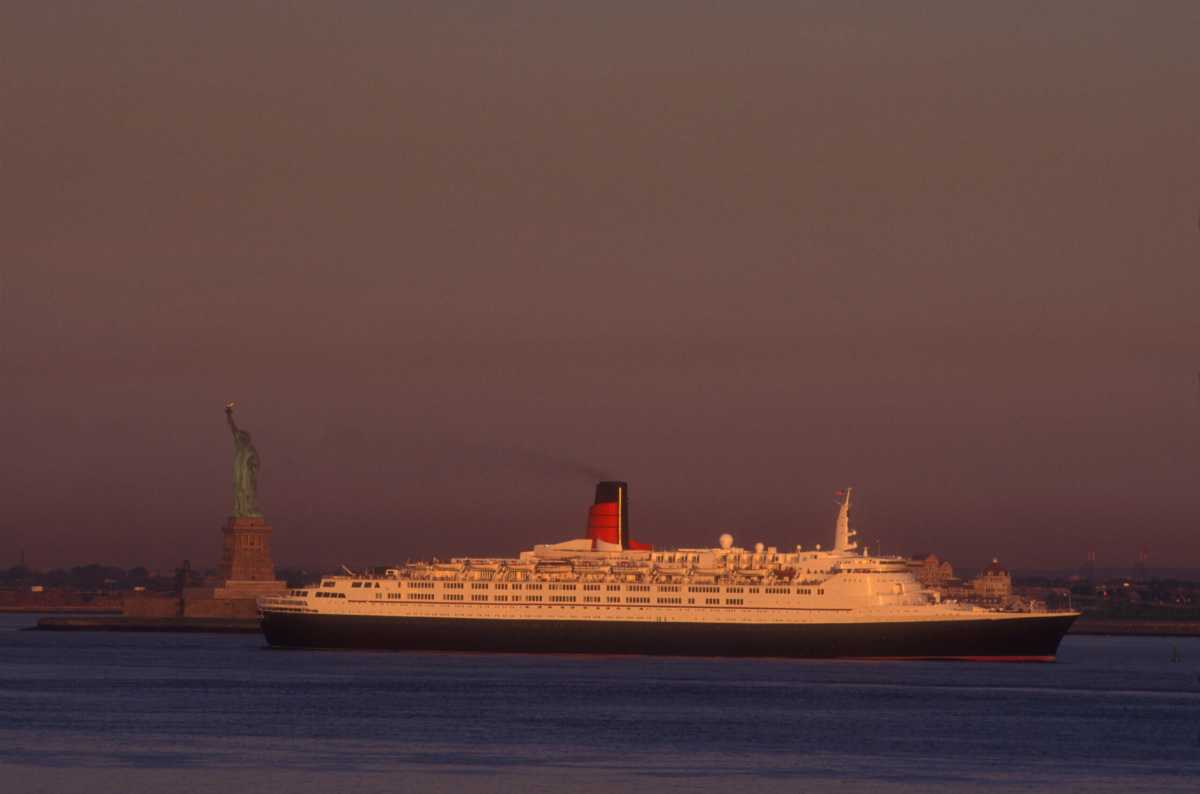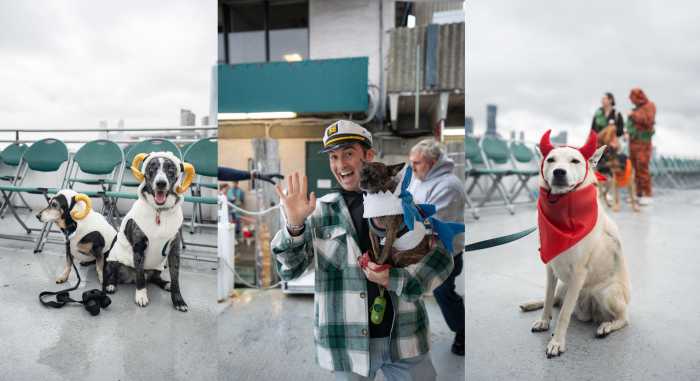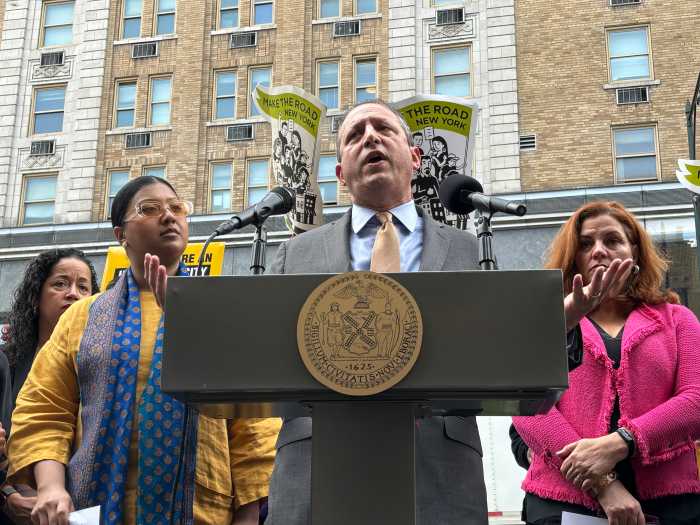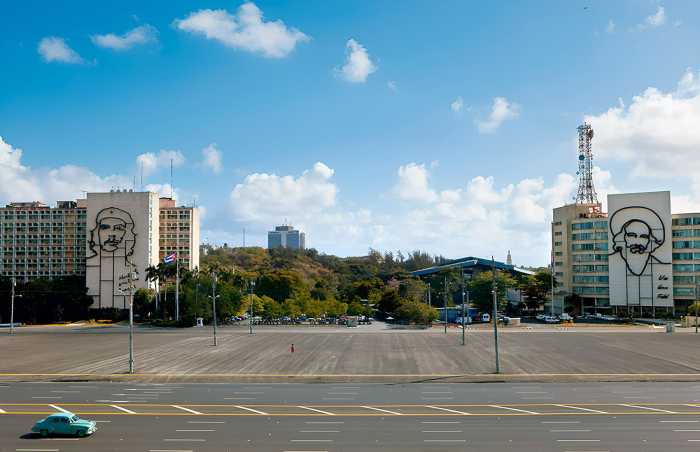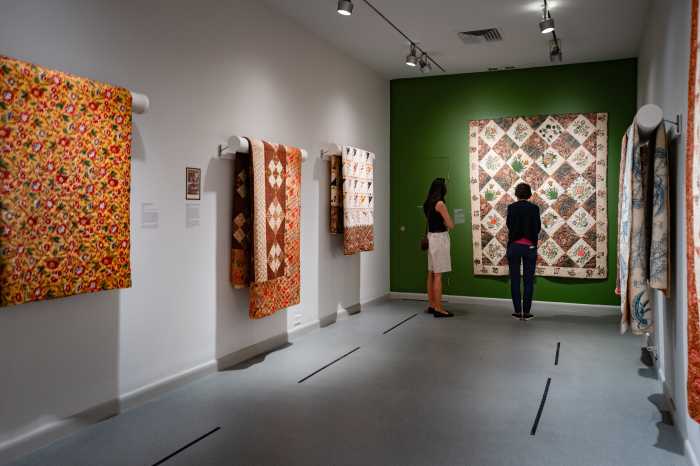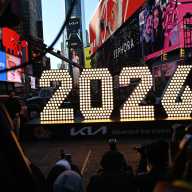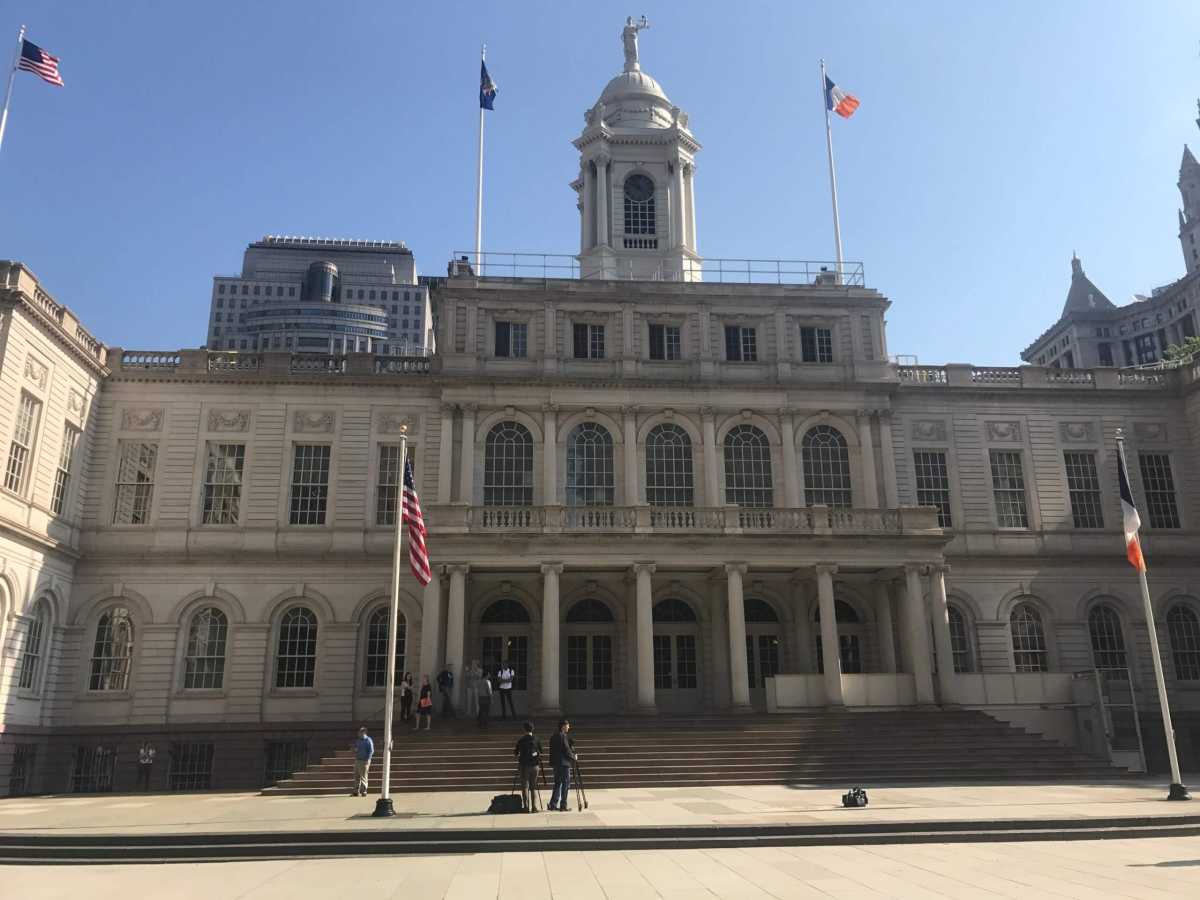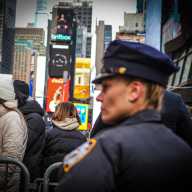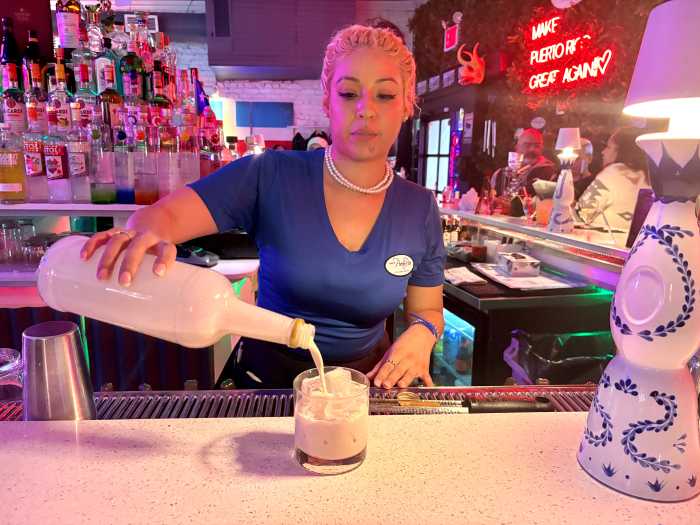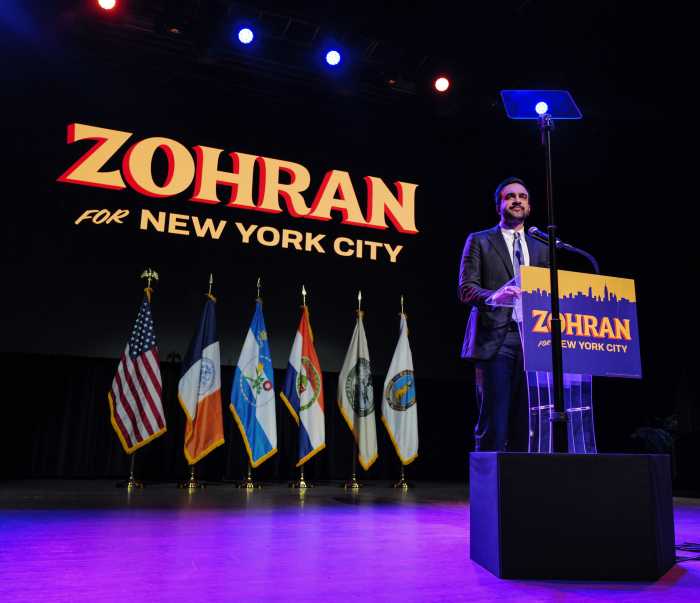Massive cruise ships would have to eschew dirty fossil fuels and connect directly to the shore’s energy grid in order to dock at New York City ports under a bill being helmed by local lawmakers.
Each day that cruise ships dock at the ports in Red Hook, Brooklyn and the west side of Manhattan, they emit as much carbon into the atmosphere as 34,000 tractor-trailers, say City Councilmembers Alexa Avilés (D-Brooklyn) and Erik Bottcher (D-Manhattan), whose respective districts are home to the city’s two cruise ship ports.
“What would people say if right behind us, right now, there were 34,400 trucks idling,” Bottcher said at a rally near the Red Hook cruise terminal on Monday. “There’d be a lot of cameras here right now, and guess what? Something would be done about it. But that’s how much pollution is being generated by these ships.”
What’s more, cruises are magnets for trucks, which must supply the myriad of goods to the ship that makes a cruise what it is, like a seemingly unlimited supply of food and booze, leading to even further associated emissions and, by extension, unhealthy outcomes for residents near the ports.
Now, Avilés and Bottcher are hoping to force the cruise line operators’ hands to lessen their impact on neighbors. Their bill, Intro 1050, would require the city’s Economic Development Corporation to start conditioning access to the cruise ports on plugging into “shore power” — in essence, plugging into dry land’s electrical grid to power operations, instead of using fossil fuels — while docked in the harbor, and on creating plans to manage traffic associated with cruises while in port.
Shore power has been around for decades and is widely utilized around the world, but is largely unused by cruises in New York. While the west side terminal doesn’t have shore power at all, the Red Hook port has had it since 2017, but it is rarely used by the massive ships that berth there.
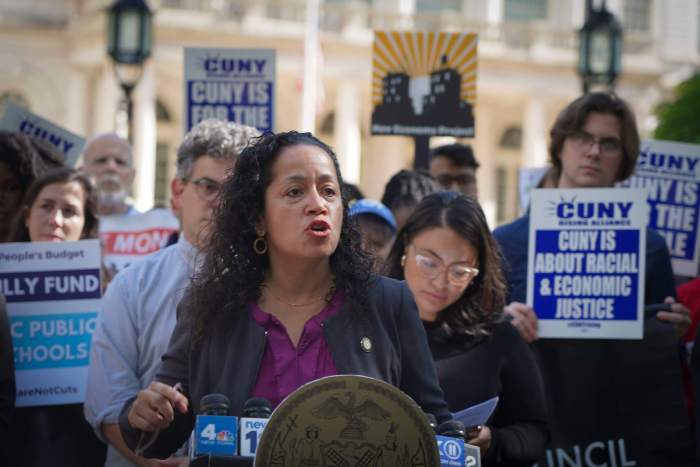
By not forcing ships to use shore power, Red Hook residents have become used to apocalyptic brown and orange clouds of smoke belching from giant cruise ships as they are set up to take on passengers for excursions out to sea.
“If you do not live in one of the two cruise ports in New York City, you might not be aware of what it can look like,” said Carly Baker Rice, program manager at the Red Hook Business Alliance. “It doesn’t have to, though.”
Those plumes of smoke are just one of the many ways Red Hook residents have borne the brunt of pollution; the neighborhood is also home to many “last-mile” logistics facilities that draw immense truck traffic, and for decades it’s been cut off from the rest of the borough by the Brooklyn-Queens Expressway.
“Our residents are suffocating, and the city must act,” said Avilés. “No cruise company should be allowed in our city unless they respect the communities and quality of life of our residents. We cannot wait for an invisible hand.”
One of those suffering is Hart Valentine, a 9-year-old boy from Red Hook with asthma, a condition he blames on the cruise ships, he said at the rally.
“I got asthma from these cruise ships coming and polluting the air,” Valentine told rallygoers. “Every single cruise ship that has come here has polluted the air and basically almost ruined our lives. Now I can’t even swim to the end of the pool without having to stop and breathe. And a lot of other kids probably feel the same way.”
The state has ambitious climate goals that require carbon emissions be slashed 40% below 1990 levels by 2030, and 85% by 2050, under the 2019 Climate Leadership and Community Protection Act. Nonetheless, the city has moved to expand the cruise industry’s footprint at its ports, investing millions of dollars in expanding the terminals so they can accommodate of the world’s largest ships.
Mayor Eric Adams has embraced the cruise industry, and last year celebrated when MSC Cruises announced it would run ships out of Brooklyn year-round; Hizzoner touted that the cruiser would generate $100 million in revenues annually and bring 200,000 tourists to the city each year.
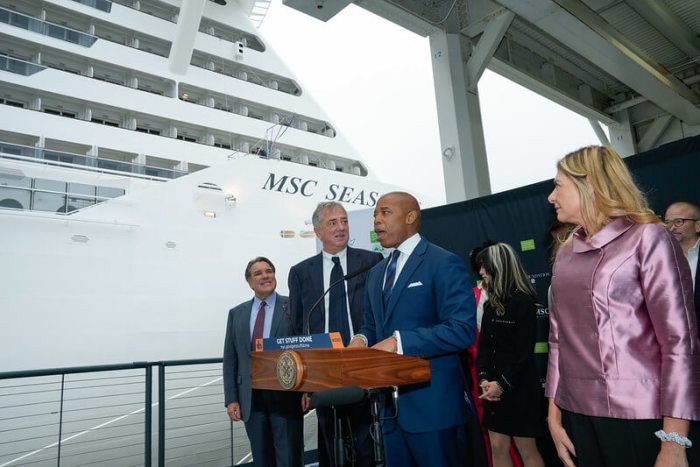
Though the ship sails under the Maltese flag, MSC counts Brooklyn as home port for its 5,000-passenger Meraviglia. The ship, which features 12 restaurants, 20 bars, a waterpark, and Formula 1 simulators, sails out of Brooklyn en route to destinations like Florida, the Caribbean, Bermuda, Canada, and New England. It’s docked in Brooklyn seven times since Aug. 6.
The Meraviglia also cannot connect to Brooklyn’s shore power, because its electrical sockets don’t align with those on the shore, which were designed specifically for Cunard Line’s Queen Mary 2.
The city’s Economic Development Corporation, which administers the cruise terminals, has pledged to invest in upgrades to Brooklyn’s shore power so more ships can plug in; in a letter to Avilés, the agency noted it is paying a vendor $1 million to “expedite” delivery of a “mobile cable positioning device” that would allow the Meraviglia to connect to shore power; that should be in place by the third quarter of next year, the agency says.
For now, the Meraviglia maintains power in port by burning fuel. MSC did not return a request for comment.
In a statement, EDC said that it is seeking to increase shore power capacity in Brooklyn and to bring it to the west side terminal.
“NYCEDC is in the process of procuring and deploying additional shore power infrastructure for the Brooklyn Cruise Terminal to allow additional ships to connect while in port,” said an EDC spokesperson. “NYCEDC will continue engaging with our elected official partners and the local community to gather their input and ensure support for the tourism industry.”
The environmental toll of cruise ships — which EDC says bring $420 million of “economic impact” to New York City each year — has come under increased scrutiny in recent years as the consequences of climate change become more salient. In addition to spewing massive amounts of carbon into the atmosphere, cruise ships also dump sewage directly into the ocean, and their presence can be highly disruptive to local wildlife.
In its letter to Avilés, EDC said it does not monitor the specific impacts on air quality caused by cruises in its ports.
In Red Hook, locals say it’s all pain, no gain for them as cruise ships make money docking in their neighborhood without giving back, whether by spending their dollars in local businesses or minimizing their impact on neighbors.
“We were never asked, we were never engaged, and no benefit of this transaction has ever quite hit our community,” said Avilés. “In fact, it has been a wholly extractive deal.”
This story was updated with comment from the Economic Development Corporation.
Read more: BQE Cantilever Gets Temporary Fixes for Structural Risks
